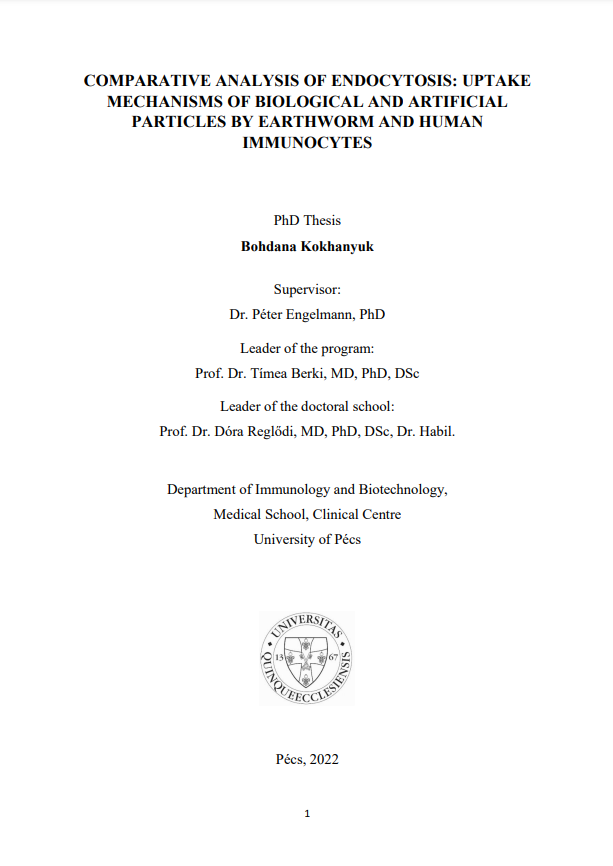Comparative analysis of endocytosis: uptake mechanisms of biological and artificial particles by earthworm and human immunocytes
Abstract
Due to evolutionary conserved innate immune mechanisms between invertebrates and
vertebrates, invertebrate immunocytes are hypothesized to be functionally similar to human
macrophages. Hence, in our research, we aimed to compare the endocytosis pathways used by
invertebrate macrophages (earthworm coelomocytes) and vertebrate phagocytes (human THP1 cells) for uptake of particles of biological (bacteria) and synthetic (nanoparticles) origin.
In the first part of the thesis we identify and compare endocytosis pathways involved in
Escherichia coli and Staphylococcus aureus uptake by human and earthworm immunocytes
applying various endocytosis inhibitors. Moreover, we investigated the mRNA expressions of
immune receptor-related molecules and bacteria/lysosomes colocalization after uptake
inhibition. We found that during bacterial uptake both earthworm and human cells share the
evolutionary conserved actin-dependent phagocytosis mechanism, which was inhibited by
preincubation of cells with cytochalasins B and D. Decreased numbers of colocalized
lysosomes/bacteria supported these findings. Our data strengthen the hypothesis about the
conserved phagocyte-like functions of earthworm coelomocytes as possible functional
similarities of human myeloid cells.

